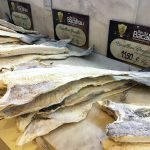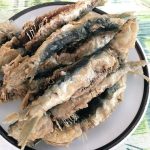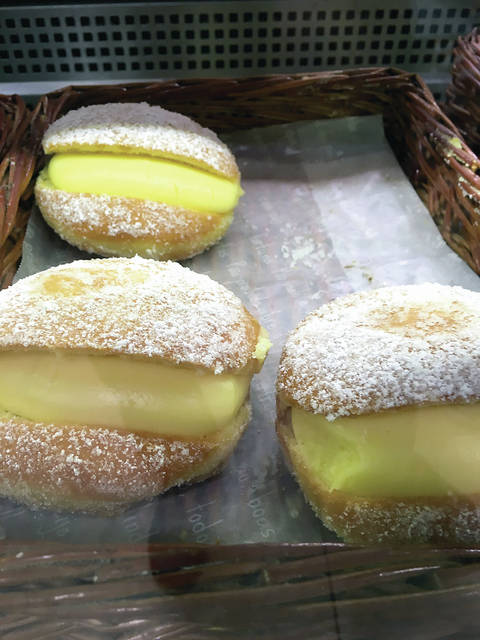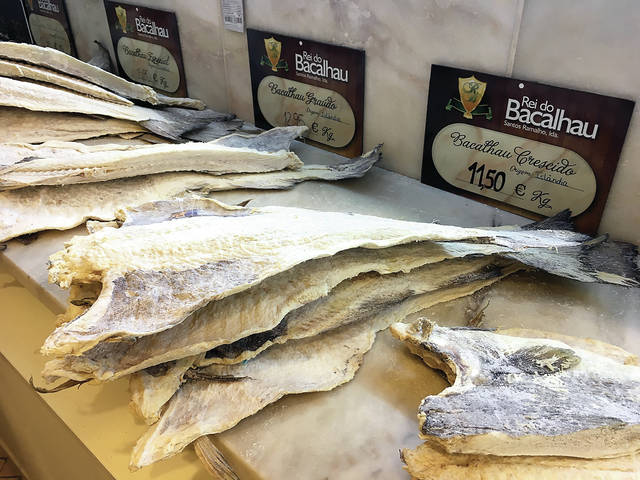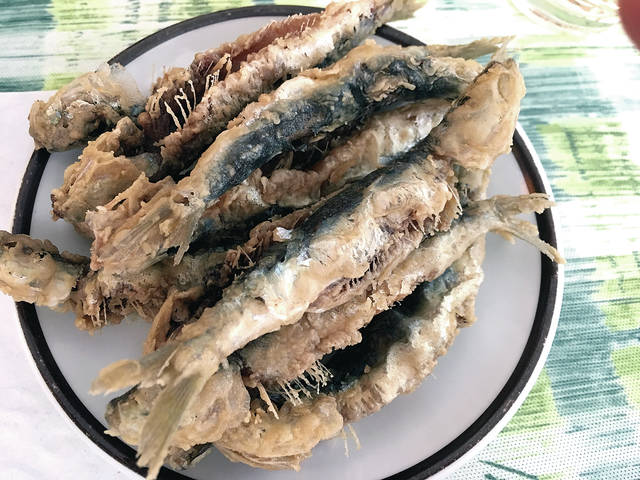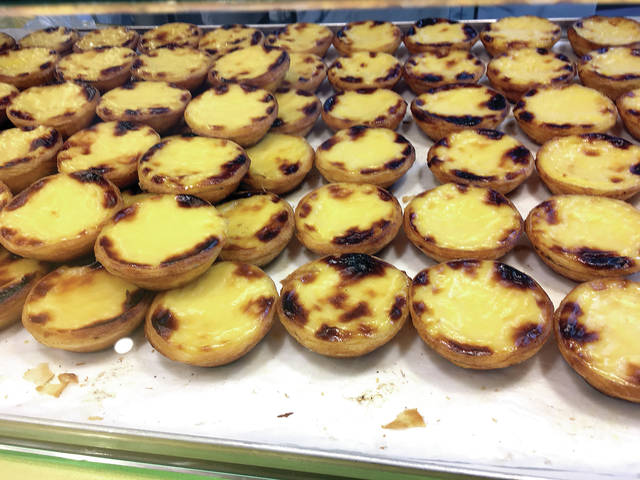For our annual road trip with the family (minus Dean and his family, who could not get away from work), we chose Portugal. We rented a van in Lisbon (Lisboa) and drove north to Porto, going to a different city each day. Our journey took us from Lisbon to a winery where wine is still crushed by feet, to Porto, Viseu, Batalha, Nazares and Sintra.
I knew that the cuisine on Portugal would not be like what we think of here in Hawaii, so I went there with an open mind. We ate in bars and shared small plates, or what the Spanish call tapas, at hole-in-the-wall restaurants where locals ate, at a winery, and to top it all off, at a Michelin star fine dining restaurant, Lab, which features the food of chef Sergi Arola, who in 1997 worked with Ferran Adria in the kitchen at Cala Montjoi. Arola currently has restaurants in Sao Paulo, Brazil, and in Chile, Mumbai, Barcelona and Madrid.
We ate and drank like they do there, starting with a white port, which they say is an appertif, their white alvanrinho wine, a red, and then ended with a port. We liked the 10-year-old ports the best, as we even had a 22-year-old port with which to compare it.
I did not see a single malasada there, but everywhere there was pastel de nata, a small tart with a light, flaky pastry, like filo dough, filled with a pudding made of eggs, cream and sugar. It is very similar to the custard tarts served in dim sum restaurants as the Portuguese settlement in Macau adopted this pastry, and it became found in dim sum restaurants everywhere.
I ate a lot of pastel de nata and my absolute favorite was from a specialty coffee shop called Manteigaria. It is worth looking for this shop and watching through a glass window while they make this tasty custard tart.
Most meals served wheat white bread, not a sweet egg bread, or what we think of as Portuguese sweet bread. A friend of Neil’s, Pedro, who lives in Viseu, said the sweet egg bread is baked especially at Easter.
Sopa de legumes was the closest to our Hawaii Portuguese bean soup. The national dish of Portugal is caldo verde, a potato kale soup with one slice of Portuguese sausage. The potatoes are cooked until they are very soft, then mashed (a stick blender would work perfectly).
Caldo Verde Soup
Serves: 4
Wash and peel:
1 pound russet potatoes
1 round onion
Cut into small cubes.
Remove skin from:
3 cloves garlic
Place all in a pot of salty water, about 4 cups.
Wash and cut into narrow strips:
3/4 cup collard greens or kale
After the potatoes and onions are cooked, mash them up with a stick blender until potatoes are completely pureeed. If more water is needed, add at this point as well as salt to taste.
Add greens and cook until done, about 15-20 minutes.
Cut into thin rounds:
1/2 Portuguese sausage
Pour soup into soup bowls, drizzle with:
Extra-virgin olive oil
Place sausage rounds on top and serve with slices of bread.
• • •
Bacalhau is an important staple for the Portuguese and can be found prepared fresh or salted. In Portugal, there are 365 recipes for it, one for each day of the year. Furthermore, being a Catholic country, bacalhau often is eaten on Friday.
Salted bacalhau was the staple protein for the explorers, dating back to the 14th century. It could be taken aboard ships and left at room temperature without going bad.
Fresh bacalhau, or bacalhau fresco, is delicious while dried, sated ones, which have been soaked in fresh water a minimum of 24 hours with water changes in order to remove the salt, which does change the texture of the flesh, tends to be a bit more stringy.
The source and history of salted cod is interesting as the cod is caught in waters of Newfoundland. After catching the cod, they are processed everyday, then brought with them back to Portugal.
Spices of
Portugal
Piri-piri are spicy peppers from Angola and are commonly used with seafood, especially shrimp, as well as poultry and in stews and marinades. The dried form of piri-piri is mixed with olive oil, vinegar and coarse sea salt and is placed on the table as a condiment. We ordered fried chicken piri-piri with Sriracha mayonnaise for one of our tapa dishes.
The Portuguese sailors and explorers brought back to their country cinnamon, or “canela,” which is sprinkled on many desserts.
Curry, or “caril,” is used sparingly, as their dishes are not heavily seasoned.
“Coentros,” or cilantro leaves; “hortela,” or mint; “louro,” or bay leaves; “oregao,” or oregano; and “salsa,” or flat leaf Italian parsley, also are popular.
Meat dishes are seasoned with “nozmoscada,” or nutmeg; “cominho,” or cumin; and “cravinho,” or cloves.
Tidbits about Portugal
As we drove, especially in the area of Viseu, we could not help but see for miles and miles the recent forest fires that burned thousands of acres of trees. Fortunately, most houses in Portugal are built of stone (hollow tile that is then plastered) and withstood the fire.
A resident of the area said the fires were set by competing paper companies. Only one person, while we were there, was arrested.
Foodie bites
• Hawaii Community College’s Culinary Program is open today till Friday. Call 934-2559 for daily specials and takeout orders.
Email Audrey Wilson at audreywilson808@gmail.com.

